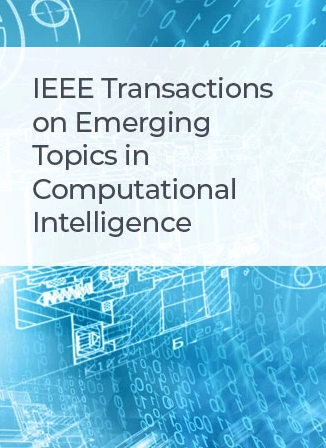deepppcc:学习有损点云压缩
IF 5.3
3区 计算机科学
Q1 COMPUTER SCIENCE, ARTIFICIAL INTELLIGENCE
IEEE Transactions on Emerging Topics in Computational Intelligence
Pub Date : 2024-10-11
DOI:10.1109/TETCI.2024.3467192
引用次数: 0
摘要
我们提出了DeepPCC,这是一种基于端到端学习的方法,用于大规模对象点云的有损压缩。对于几何和属性组件,我们引入了多尺度邻域信息聚合(NIA)机制,该机制逐步应用分辨率降尺度(即几何的二进降采样和属性的平均池化),并在每个分辨率尺度上结合稀疏卷积和局部自关注来有效地表示特征。在一个简单的自编码器结构下,按尺度的NIA块被堆叠作为编码器-解码器对中的分析和综合变换,以最好地表征空间邻居,从而精确逼近几何占用概率和属性强度。实验表明,DeepPCC在数量和质量上都明显优于最先进的基于规则的MPEG -PCC和基于学习的解决方案,这有力地证明了DeepPCC是新兴的基于人工智能的PCC的解决方案。本文章由计算机程序翻译,如有差异,请以英文原文为准。
DeepPCC: Learned Lossy Point Cloud Compression
We propose DeepPCC, an end-to-end learning-based approach for the lossy compression of large-scale object point clouds. For both geometry and attribute components, we introduce the Multiscale Neighborhood Information Aggregation (NIA) mechanism, which applies resolution downscaling progressively (i.e., dyadic downsampling of geometry and average pooling of attribute) and combines sparse convolution and local self-attention at each resolution scale for effective feature representation. Under a simple autoencoder structure, scale-wise NIA blocks are stacked as the analysis and synthesis transform in the encoder-decoder pair to best characterize spatial neighbors for accurate approximation of geometry occupancy probability and attribute intensity. Experiments demonstrate that DeepPCC remarkably outperforms state-of-the-art rules-based MPEG G-PCC and learning-based solutions both quantitatively and qualitatively, providing strong evidence that DeepPCC is a promising solution for emerging AI-based PCC.
求助全文
通过发布文献求助,成功后即可免费获取论文全文。
去求助
来源期刊

IEEE Transactions on Emerging Topics in Computational Intelligence
Mathematics-Control and Optimization
CiteScore
10.30
自引率
7.50%
发文量
147
期刊介绍:
The IEEE Transactions on Emerging Topics in Computational Intelligence (TETCI) publishes original articles on emerging aspects of computational intelligence, including theory, applications, and surveys.
TETCI is an electronics only publication. TETCI publishes six issues per year.
Authors are encouraged to submit manuscripts in any emerging topic in computational intelligence, especially nature-inspired computing topics not covered by other IEEE Computational Intelligence Society journals. A few such illustrative examples are glial cell networks, computational neuroscience, Brain Computer Interface, ambient intelligence, non-fuzzy computing with words, artificial life, cultural learning, artificial endocrine networks, social reasoning, artificial hormone networks, computational intelligence for the IoT and Smart-X technologies.
 求助内容:
求助内容: 应助结果提醒方式:
应助结果提醒方式:


